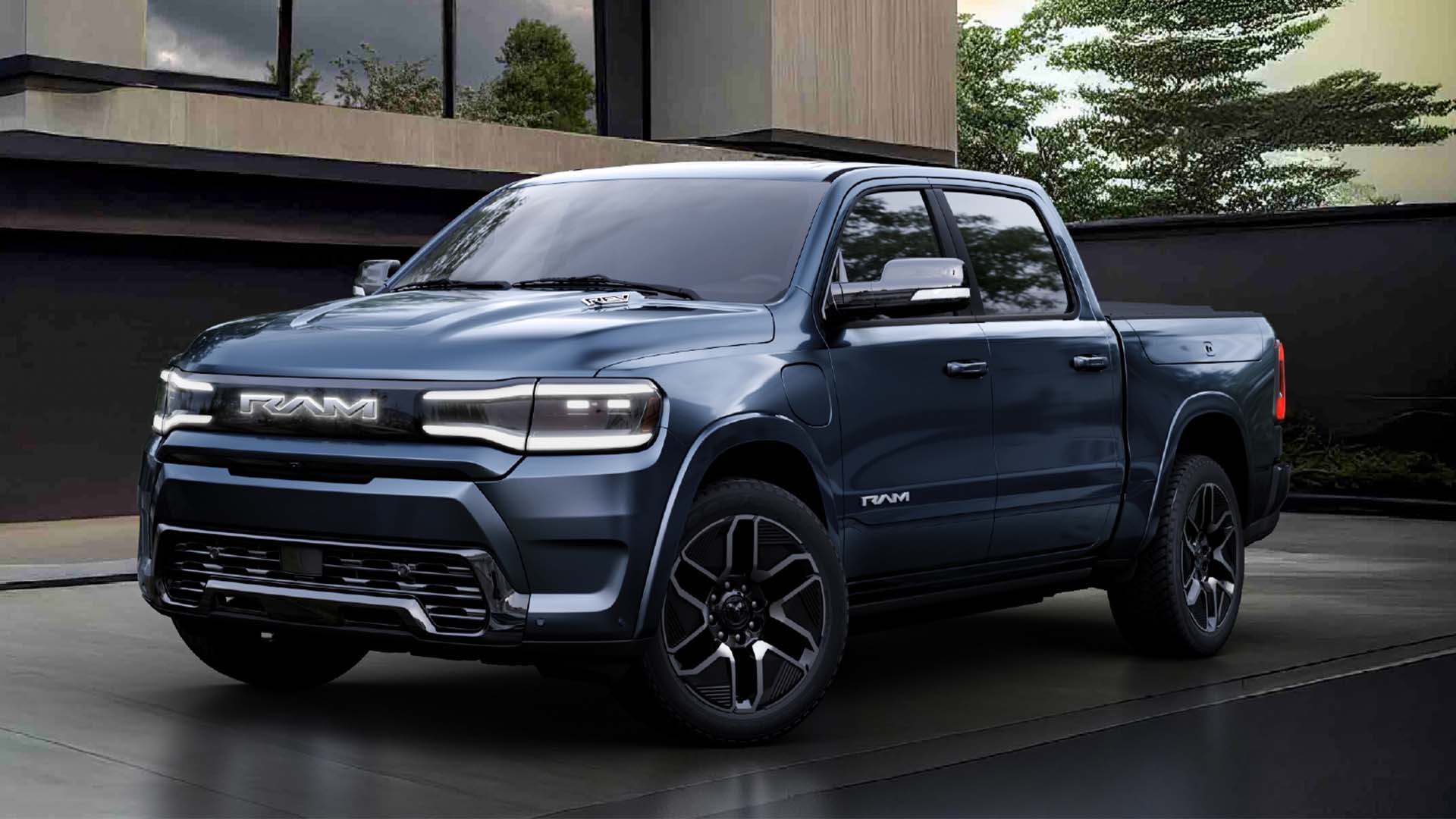

The electric Ram 1500 REV won’t be first to the party when it launches in late 2024. The Ford F-150 Lightning will be two years old by then, as will the Rivian R1T and GMC Hummer EV. That said, Ram is doing electrification differently by combining battery power and an internal combustion range extender to curb range anxiety. The truckmaker’s Super Bowl ad reiterates this, proving that Ram is really banking on that piece of kit to be its difference maker.
In case you haven’t seen it, the Ram 1500 REV’s Super Bowl spot focuses on premature electrification. It’s a goofy play on words that also shows Ram’s stance on what an electric pickup should be for owners, even if it means waiting more than a year. Underneath all the double entendres are legit concerns that Ram claims it will solve by not going entirely electric just yet
—namely range.

Indeed, we’ve seen enough forum threads and Facebook rants by now to know battery-powered pickups aren’t for everyone yet. They can handle the daily driver role as well as any other EV, and their instant power makes towing a breeze, but only for short distances. Some F-150 Lightning owners claim a full charge only lasts them around 100 miles with a big trailer hitched behind. Those anecdotes alone are enough to turn away a lot of potential customers, whether they plan to work their truck or not.
This is a problem that Ford and others have chosen to solve on the fly with future solutions in the works, like more advanced battery tech. Ram is seemingly holding out until it can deliver an EV whose range, payload capacity, and max towing are on par with its internal combustion models. The manufacturer knows it could be a while before batteries are capable of such high power and longevity, which is why it’s turning to the range extender option that others seemingly aren’t considering at all.
The Ram 1500 REV will likely employ a small internal combustion engine strictly to produce electricity for the battery. That would make it less like a plug-in hybrid as those use gas engines to power the wheels; in Ram’s case, that job will seemingly be reserved solely for the electric motors. Mazda is doing something similar with a rotary range extender in its MX-30 EV and BMW did the same in the i3.




Specifics are still to be determined as production of the Ram 1500 REV is more than a year out. This might be the best way to appease skeptical EV converts, even if it seems like a lukewarm solution for the rest of the world. Regardless, it seems like a better use of resources than the third-row jumpseats we saw on the Revolution concept last month.
Got a tip or question for the author? Contact them directly: caleb@thedrive.com